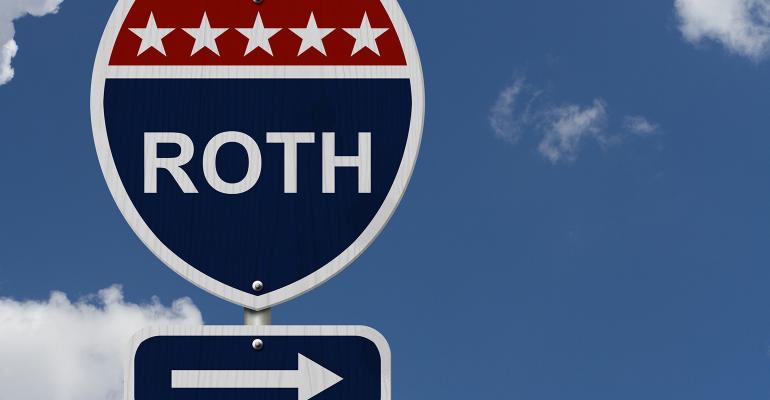With a traditional Individual Retirement Account (IRA), an account owner contributes pre-tax dollars and withdrawals during retirement are then taxable. Conversely, contributions to a Roth IRA are made with after-tax dollars and withdrawals during retirement are tax free when they’re distributed according to IRS rules. (A distribution from a Roth IRA is tax free and penalty free, provided the 5-year aging requirement has been satisfied and one of the following conditions is met: age 59-1/2, disability, qualified first-time home purchase, or death.) A Roth IRA conversion enables an individual to take all or part of an existing traditional IRA and convert it to a Roth IRA. Converting assets held in an IRA to a Roth IRA so that they’re distributed tax-free might sound like a good idea, but investors must keep in mind that the Internal Revenue Service gives no free passes, and this so-called “privilege” comes with a cost – namely paying taxes today in exchange for a potentially lower future tax liability. When converting IRA assets into Roth IRA assets, the owner must pay taxes on the original deducted contributions as well as money earned on the investments in the IRA.
Investors who have experienced stock market losses often find a conversion to be an attractive maneuver. While lower account values may create the opportunity to convert at a lower tax rate, clients should understand this is typically a long-range planning decision that should be done holistically alongside other basic personal-finance concerns. One consideration is to compare how much tax one would owe by converting, versus what one might pay upon making retirement withdrawals when there’s a good chance that by that stage in life one’s overall income may be lower.
Critical Communicatons
When planning a Roth IRA conversion, clients should consider reducing adjusted gross income (AGI) by contributing more to a pretax 401(k) plan, if available to them. One may also employ tax-loss harvesting in a taxable account. Potential downsides are the possibility of losing eligibility for such write-offs as the child tax credit or the student loan interest deduction.
Retirees may unknowingly trigger higher Medicare premiums after converting. For those residing in states that impose an income tax, a Roth IRA conversion will likely be treated as taxable income by one’s home state. These are the types of issues of which clients need to be aware so an informed choice can be made.
Conversion Considerations
Typically, the longer funds remain in a Roth IRA, the greater the tax-free investment growth. However, a Roth IRA conversion may not be suitable for a client who anticipates taking withdrawals within five years of converting.
A conversion amount can be ascertained after estimating the subsequent tax liability it will generate. With this in mind, clients are widely advised to pay for IRA conversion costs with their non-retirement savings, for example, non-qualified funds. Using retirement funds to pay any conversion taxes will reduce one’s account balance and consequently the amount of their retirement assets.
One may also choose to convert only a portion of their eligible traditional IRA holdings to a Roth IRA as well as balances from any qualified workplace savings plans, often left over from former positions. While an investor may be able to pay the taxes on the entire conversion amount, it may be advisable to engineer partial conversions over several years. In this fashion the income generated by the conversion ideally is taxed at a lower rate. This allows for more efficient management of any conversion tax liability, as converted amounts are generally treated as taxable income. It’s often recommended to convert no more than what will propel a client to the upper portions of their present federal tax bracket.
Also bear in mind that Required Minimum Distribution (RMD) amounts aren’t eligible to convert to a Roth IRA. RMDs must be taken in the year of conversion before converting to a Roth IRA.
Often, investors will convert their IRA accounts to Roth IRAs for purposes of helping their heirs receive future tax-free distributions. However, it’s important to note if the account holder died after 2019, non-spouse designated beneficiaries planning to spread distributions over their life expectancy will instead have to fully withdraw the funds within 10 years.
It’s imperative that investors understand why a Roth IRA conversion may be worth consideration. Such decisions should be made in coordination with other major financial planning decisions facing the investor for maximum effectiveness. Client’s age, investment time horizon, the value of assets being converted, current and future tax brackets are among the factors a client needs to consider.
Jeff Fishman is founder of JSF Financial, LLC, a boutique wealth-management firm in Los Angeles.





